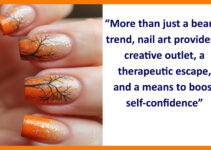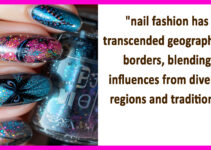Introduction
In the ever-evolving landscape of fashion and beauty, nails have transcended their traditional role as mere cosmetic enhancements. Once limited to simple coats of polish and conventional designs, nail artistry has now emerged as a form of wearable art, pushing the boundaries of creativity. One of the most revolutionary trends in this realm is the rise of hyper-experimental textures and 3D sculpting. With advancements in nail technology, the influence of avant-garde aesthetics, and a growing appreciation for self-expression, nails are becoming intricate canvases that blend art, sculpture, and innovation.
This article explores the evolution of nails as wearable art, the techniques used in hyper-experimental textures and 3D sculpting, the role of technology and digital fabrication, and the cultural significance of this artistic revolution.

The Evolution of Nail Art: From Basic to Extravagant
Nail adornment has a long and rich history, dating back to ancient civilizations such as Egypt, China, and India. Cleopatra and Chinese nobility used pigments like henna and crushed carmine to tint their nails, signifying social status and beauty ideals. Over the centuries, nail trends have evolved from minimalist grooming to elaborate artistic expressions.
The 20th and early 21st centuries saw the popularization of acrylics, gel nails, and intricate nail designs. While rhinestones, decals, and chrome effects introduced elements of embellishment, it was only in the last decade that nail artistry took a radical turn. Influenced by haute couture, contemporary sculpture, and experimental material science, hyper-experimental textures and 3D sculpting have redefined the nail industry.
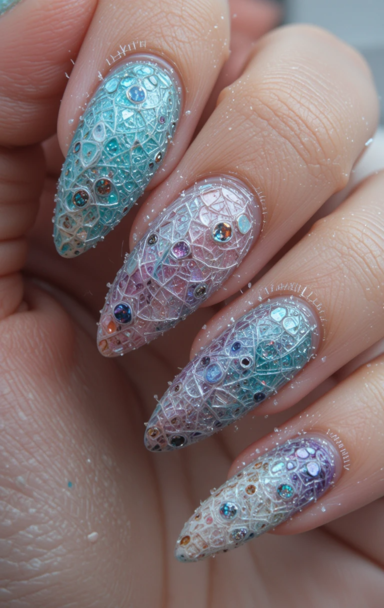
Hyper-Experimental Textures: Exploring Tactility and Depth
Traditional nail textures typically revolve around glossy, matte, or glittery finishes. However, hyper-experimental textures introduce a new dimension of tactility. These textures can range from organic and natural-inspired surfaces to highly industrial and abstract compositions. Some key innovations include:
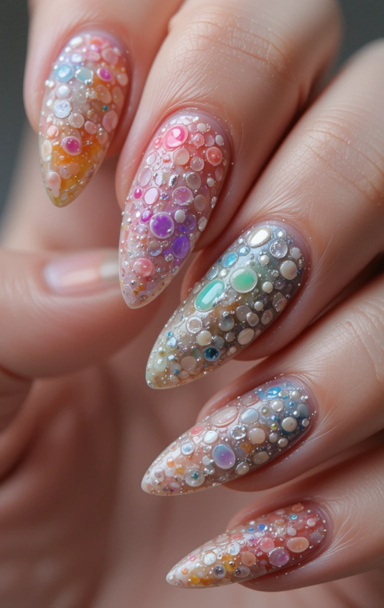
- Velvet and Furry Nails
Utilizing flocking powder and fiber coatings, velvet nails mimic the softness of fabric, giving the nails a plush, textile-like texture. Similarly, fur or feather embellishments create a tactile, avant-garde effect, making nails look like extensions of haute couture fashion pieces. - Liquid and Drip Effects
Inspired by surrealist and abstract art, nail artists have experimented with glossy, resin-like finishes that appear as if the nails are dripping with paint, blood, or molten metal. Using sculpting gels and UV-cured materials, these effects add fluidity and movement to nail designs. - Cracked and Weathered Surfaces
Crackle-effect polishes and 3D sculpting techniques allow nails to resemble cracked stone, aged wood, or distressed metal. These rugged textures introduce an industrial, grunge-inspired aesthetic to wearable nail art. - Geode and Crystal Formations
Inspired by natural minerals, geode nails incorporate layers of resin, gel, and iridescent pigments to replicate the look of sliced gemstones. Some designs feature 3D crystalline protrusions, making the nails appear like they are encrusted with raw amethyst, quartz, or agate. - Organic and Nature-Inspired Textures
Advances in sculpting materials have allowed artists to create nails that resemble coral reefs, honeycombs, reptilian scales, or tree bark. These hyper-experimental textures mimic the complexity of biological forms, blending naturalism with high fashion.
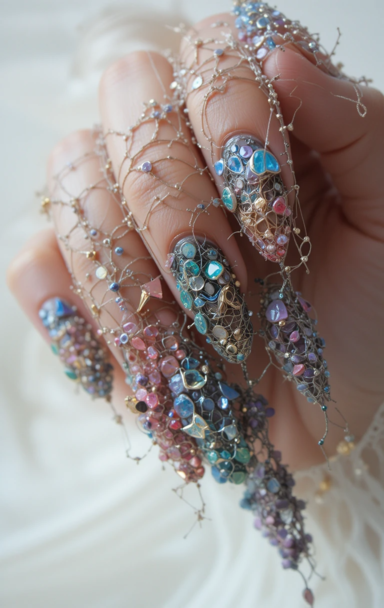
3D Sculpting: Transforming Nails into Miniature Sculptures
While hyper-experimental textures add depth and tactility, 3D sculpting takes nail art to a sculptural level. This technique involves building up layers of gel, acrylic, or specialty resins to create three-dimensional shapes that extend beyond the nail’s surface. Some of the most groundbreaking sculptural nail trends include:

- Miniature Architecture and Structural Designs
Nail artists are designing nails inspired by Gothic cathedrals, skyscrapers, and intricate latticework. Using acrylic or 3D-printed elements, these nails become architectural masterpieces that blend fashion with structural engineering. - Surrealist and Abstract Forms
Many artists are embracing surrealist motifs, such as floating eyeballs, melting forms, and distorted fingers. These designs challenge the traditional function of nails and redefine them as surreal extensions of the body. - Wearable Technology and Kinetic Elements
Some nail designs incorporate micro-motors, LED lights, and kinetic elements that allow nails to move or change color in response to temperature or touch. This fusion of technology and beauty transforms nails into interactive art pieces. - Nature and Fantasy Creations
From sculpted flowers that bloom to dragon scales and fairy wings, 3D nail sculpting brings elements of fantasy and mythology into tangible, wearable designs. These nails often extend far beyond the fingertips, resembling theatrical costume pieces. - Food and Pop Culture References
Playful, hyper-realistic 3D nails have gained popularity, with designs resembling sushi, candy, fast food, or cartoon characters. This trend celebrates pop culture, nostalgia, and whimsical aesthetics.
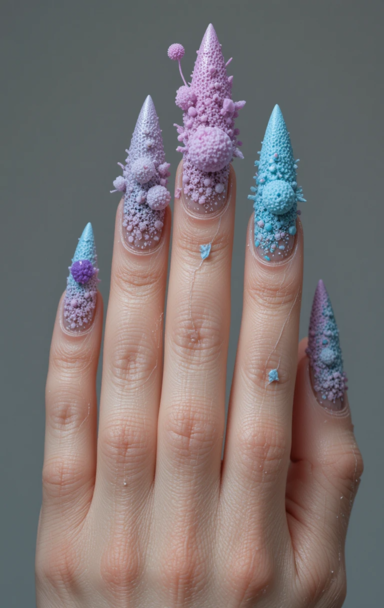
The Role of Digital Fabrication and Technology
The rise of hyper-experimental nail art has been greatly influenced by digital fabrication techniques, including 3D printing and laser engraving. Nail artists and designers can now create intricate, highly detailed nail components that were once impossible to achieve by hand. Some key technological advancements include:
- 3D Printing: Allows for precision in sculptural elements, enabling intricate, customized designs that can be attached to natural or artificial nails.
- Augmented Reality (AR) Nail Apps: Virtual try-on applications let users preview hyper-experimental nail designs before application.
- Smart Nails: Some innovators have embedded NFC (Near Field Communication) chips into nails, enabling them to function as digital keys or payment devices.

Cultural and Social Significance of Experimental Nail Art
The growing acceptance of hyper-experimental nail designs reflects broader cultural shifts toward individuality, self-expression, and breaking traditional beauty norms. This trend has been embraced by fashion designers, performance artists, and social media influencers, turning nails into a powerful mode of storytelling.
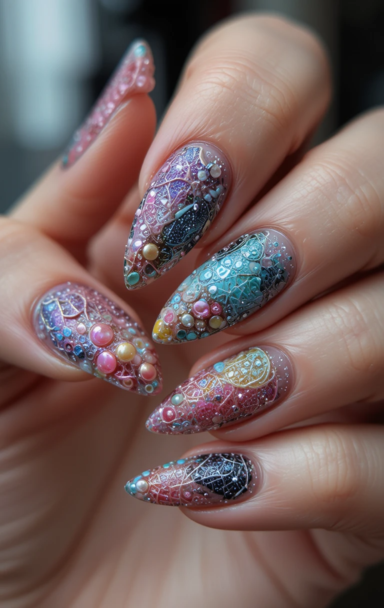
- Gender Fluidity and Inclusivity: Nail art is no longer confined to traditional gender norms. Artists of all identities are using hyper-experimental designs as a means of personal expression.
- Social Media and Global Influence: Platforms like Instagram, TikTok, and Pinterest have amplified the visibility of avant-garde nail trends, allowing artists to share their work on a global scale.
- Collaboration with Fashion and Art: Many high-fashion brands are incorporating extreme nail art into their runway shows, merging beauty with couture aesthetics.
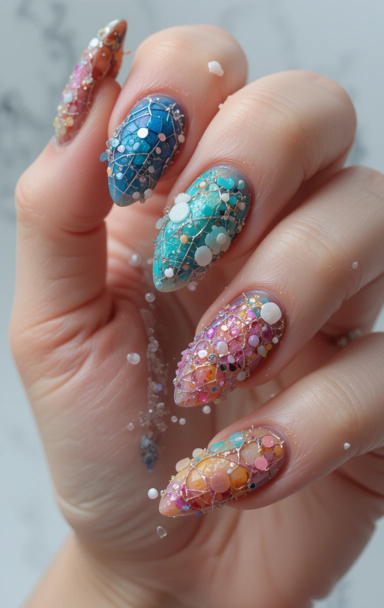
The Future of Nails as Wearable Art
As nail artistry continues to evolve, the future will likely see even more radical innovations in texture, form, and technology. Some anticipated trends include:
- Bioengineered Nails: Scientists and artists may develop biocompatible materials that integrate with the natural nail, creating living, self-repairing nail art.
- AI-Generated Designs: Artificial intelligence could be used to create customized nail art patterns based on user preferences and real-time trends.
- Sustainability in Nail Art: With growing concerns about environmental impact, the future may see a rise in biodegradable nail materials and eco-friendly sculpting techniques.
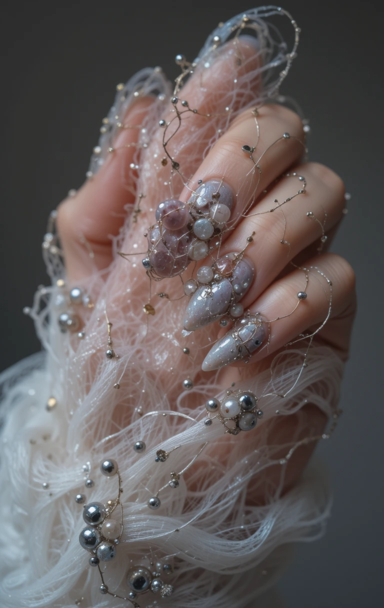
Conclusion
The evolution of nails from simple manicures to hyper-experimental textures and 3D sculptures signifies a groundbreaking shift in beauty and fashion. What was once a niche art form has become a mainstream cultural phenomenon, driven by technological advancements, artistic ingenuity, and a desire for self-expression. As this movement continues to gain momentum, nails will remain at the forefront of wearable art, constantly challenging the boundaries of creativity and innovation.


